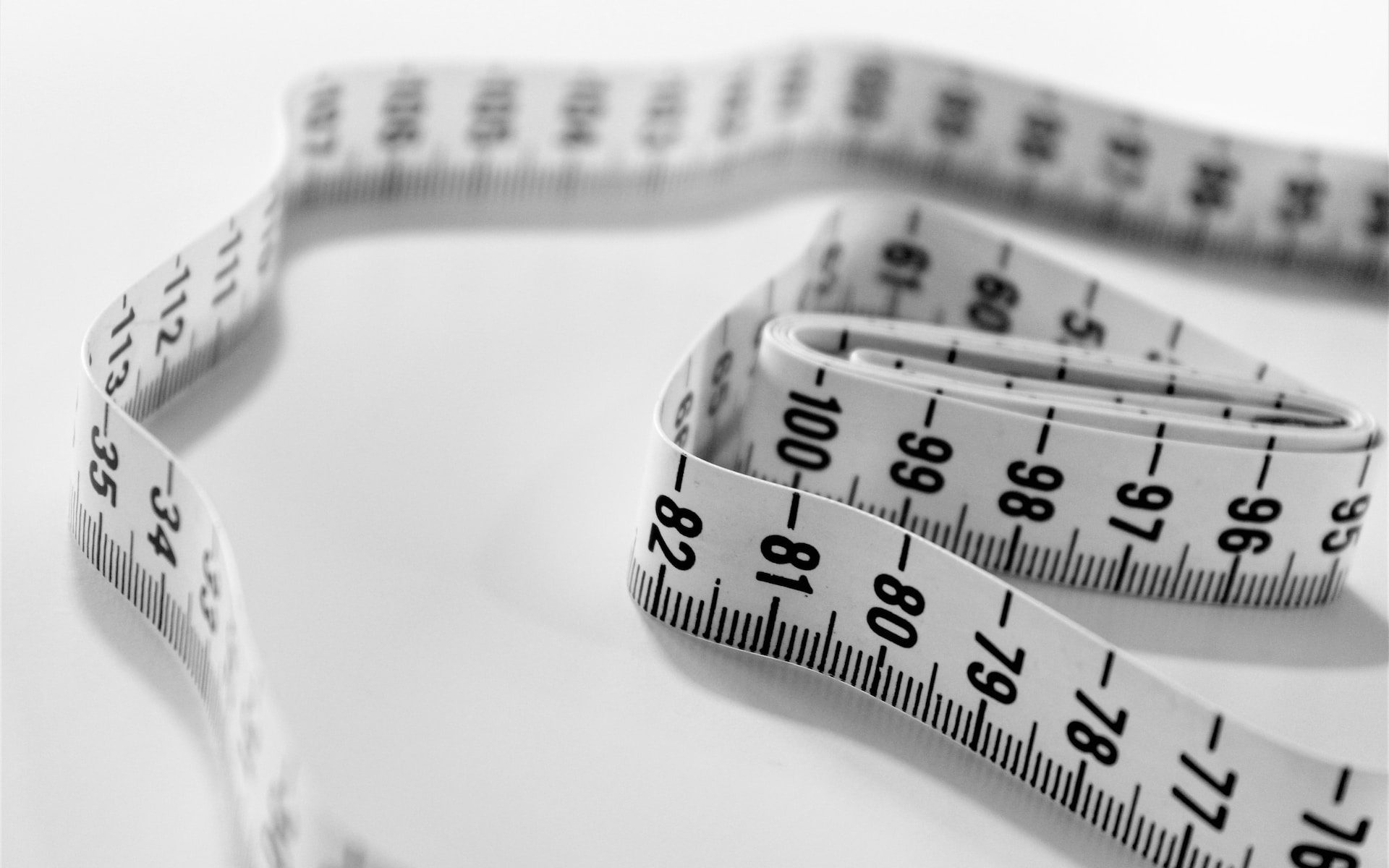To get the full benefit of the iModel app, it’s important to put in as many of your body measurements as you can and keep them updated. By doing this, we’re able to bring you the clothes that will likely fit you best, without having to try them on, no matter what the size the manufacturer puts on the label.
When you post pics of your favorite outfits whether at home or while out shopping, you can also help others find the right clothes and fit for them. Let’s all work together to make it easier to save time finding clothes that fit and look great!
Once you have them you can easily add them to the app by going to settings and move the slider to the corresponding number:
Here’s how to take your measurements:
First, you’ll need a tape measure.
If you don’t have one handy you can take a piece of string or twine. You can hold the string at the point you want to measure and then hold it over a straight ruler and line it up to find the measurement.
Chest/Bust
Measure around the fullest part of your chest or bust, typically at nipple height.
Waist
Measure around your natural waistline, which is the narrowest part of your torso, usually above your belly button.
Hips
Measure around the fullest part of your hips, often at hip bone level.
Sleeves
Measure from the shoulder seam to the desired length for sleeves.
Shoulders
Measure from the edge of one shoulder to the other.
Neck
Measure around the base of your neck if you’re measuring for a garment like a collared shirt.
Thigh Circumference
Measure around the fullest part of your thigh, typically a few inches below your hip.
Inseam
Measure from the crotch seam (the point where your legs meet) down to the desired length for pants or shorts.
Measuring Your Weight
Use a reliable and accurate scale. Bathroom scales are commonly used for personal weight measurement. Make sure the scale is placed on a flat, level surface.
To get a more accurate reading, wear minimal or lightweight clothing, or weigh yourself in your underwear. Avoid heavy clothing, shoes, or accessories.
Zero the Scale
Ensure the scale reads zero before stepping on it. Most digital scales automatically reset to zero when you step on them.
How to Measure Your Height
You’ll need a wall or door frame, a flat surface, and a measuring tape or ruler.
Choose a Flat Surface
Find a flat, level surface against a wall where you can measure your height. Remove any rugs or obstructions that might affect the accuracy of your measurement.
Remove Footwear
Take off your shoes and any headgear that might add to your height, such as a hat or hair accessories.
Stand Up Straight
Stand with your back against the wall, ensuring your heels, buttocks, and shoulders are touching the wall. Stand up straight, looking straight ahead with your arms hanging naturally at your sides.
Find a Straightedge
Hold a book or a flat object parallel to the floor on top of your head. This will help you locate the highest point on your head accurately.
Measure Your Height
Have a friend or family member help you if possible. While keeping the book parallel to the floor, mark the point where it touches the wall with a pencil or a small piece of tape.
Use a Measuring Tape or Ruler
Using a measuring tape or ruler, measure from the floor to the mark you made on the wall. Make sure the measuring tape is straight and perpendicular to the floor. This measurement is your height.
Record your height in either feet and inches or centimeters, depending on your preference or the standard unit of measurement in your region.
Repeat for Accuracy
To ensure the accuracy of your measurement, you can repeat the process a couple of times and take the average of the measurements if they differ slightly.
Photo by Siora Photography on Unsplash


